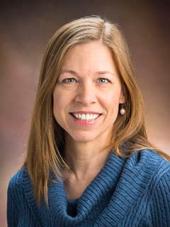Q&A: Reimagining autism assessments
The COVID-19 pandemic has greatly affected medical professionals’ ability to assess and diagnose people with autism spectrum disorder (ASD). To keep people safe, autism centers have had to adapt their diagnostic practices from in-person to online. The transition to telehealth has had some benefits, but it has also created new challenges.
In this Q&A, Dr. Judith S. Miller, psychologist in the Department of Child and Adolescent Psychiatry and Behavioral Sciences at the Children’s Hospital of Philadelphia, discusses how autism assessment practices have changed—and what to expect in the future.
Q: How has the pandemic affected clinicians’ ability to assess and diagnose autism?
It forced us all to try telehealth, and now that we’ve done it, we can make better decisions about when telehealth can work well. I was very resistant to telehealth before the pandemic. But now I have seen telehealth evaluations help concerned families get the evaluation they need without having to figure out travel logistics or miss an entire day of work or school. For some families, getting feedback in their own home has been helpful because more family members can listen, and because they can process the information in a relaxed space. Of course, some families prefer to do things in the clinic space, which is also fine. Telehealth just gives everyone more options.
Q: How did your center adapt its approach to diagnostic evaluation for ASD in the wake of COVID-19?
We rallied together to figure out how to see children across a wide range of ages in person with personal protective equipment (PPE) or via telehealth. We learned the new telehealth measures that were available and adapted clinical interviews and activities for the other ages and levels of ability. The hardest part has been the uncertainty with insurance reimbursements for telehealth visits and knowing that guidance for telehealth might change between the time we schedule a family and the time the evaluation happens.
Q: What are the benefits and challenges of telehealth assessments?
For some children, it’s been very helpful to see them in their home environment, surrounded by their own toys and in their own comfortable spaces. For the little kids, collaborating with the parents around social presses has been a really helpful addition to the assessment. When we can coach a parent to try something like joint attention, calling their child’s name or trying an imitation activity, the parent can experience for themselves what the clinician would be observing in the clinic. It really helps the parents understand the purpose of the evaluation and provides an opportunity to experience their child’s strengths and challenges in a different way.
Q: How has the transition to telehealth affected access to autism assessment and diagnosis in underserved communities?
Many families from underserved communities have been incredibly grateful for telehealth because of the reduced burden on travel and time. That said, early in the pandemic, it was clear that lower income families were less likely to agree to telehealth. Thus, we are continually monitoring who is being scheduled for both initial evaluations and follow up visits to make sure we are not creating a new version of the same disparity.
Q: Do you think that this moment will have any lasting impact on autism assessment practices in the future?
I think it will, because now there are clinicians and families around the world who are comfortable with telehealth. It’s now a widely available and familiar tool, and clinicians will create innovative ways to use it to help their patients.
Q: What best practices do you recommend to other clinicians conducting virtual assessments for autism?
I think the most important practice is to ask yourself and the family whether you are getting a valid clinical observation. That was standard practice before the pandemic, is still the case with in-person evaluations with PPE and is also the case with telehealth. If you are not getting a valid clinical observation, then you don’t make a diagnostic conclusion until you address that gap in the evaluation.
If the child was too anxious in your clinic environment, telehealth to the home might give you a more valid observation. If the child thrives in 1:1 interaction with a friendly and supportive adult, then you need to get some observations with peers. If the child loves FaceTime or other screen-based conversations, then you might need to see them in person to get a better representation of their in-person interactions. You and the family need to agree on the validity of your observations, or you shouldn’t move forward with a diagnostic conclusion.
Learn more:
- View our Telehealth Tool Kit for Families and Providers
- Learn how to create an inclusive vaccine experience for people with autism
- Read a Q&A offering advice about getting through the current wave of the pandemic
- See our full list of COVID-19 resources for autistic adults, family members and health professions

